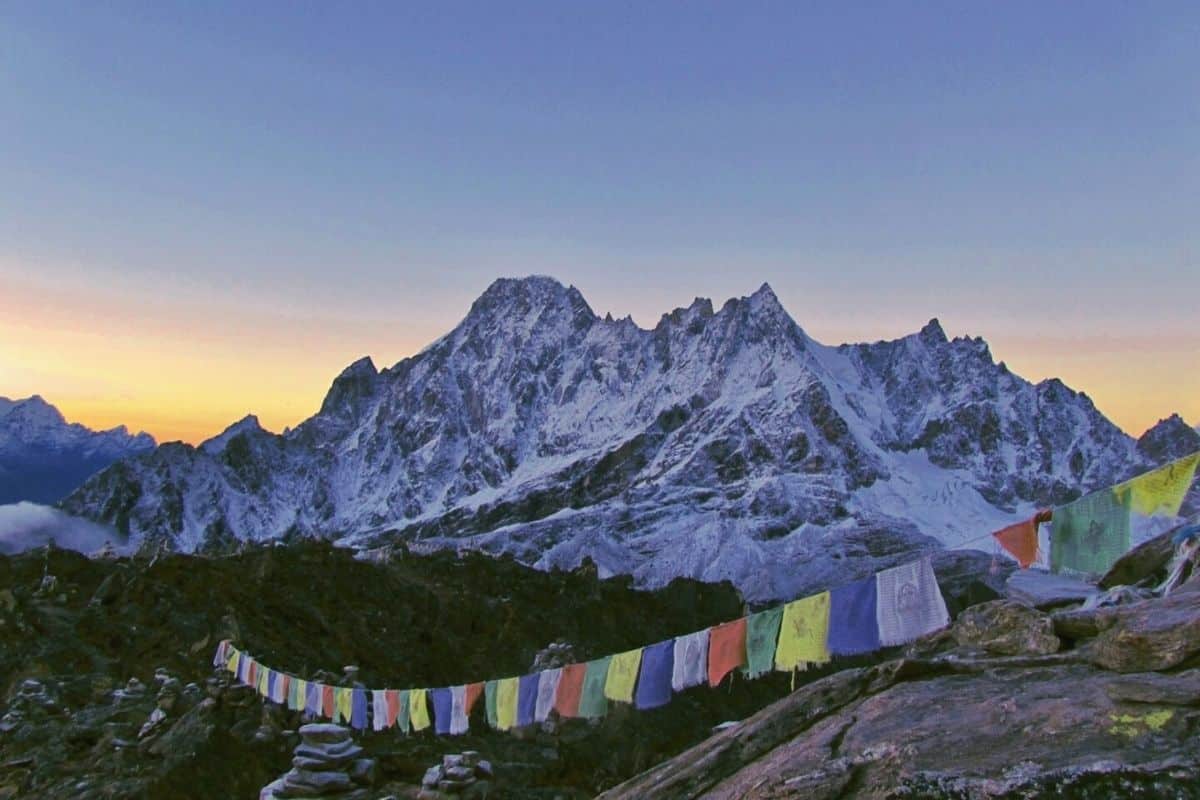Whether it’s plain old “summit fever,” the need for a new challenge, or a simple logical next step, at some point in their hiking career, almost every hiker finds themself wondering if they should (or could) up the stakes and branch out into mountaineering.
But what does it take to become a mountaineer as opposed to a hiker? And how should you go about taking on your first big mountaineering peaks?
In this post, we’ll answer the above questions and provide further insights into developing the technical skills necessary to tackle testier and more vertical terrain. Even better, we’ll also suggest 6 peaks around the globe that are ideal for beginners where you can get that first big climb under your belt.
Table of Contents
7 Expert Mountaineering Tips for Novices
1. Improve Your Fitness Level
Most mountaineers would agree that their pastime is a joyful activity yet also a grueling one. Should you embark on a career in mountaineering, you’ll soon become no stranger to various hardships, amongst them 10-20-hour days putting in thousands of feet of elevation gain, all whilst carrying a veritable shedload of “gear” (equipment).
In many cases, you’ll be doing the above at a high altitude, where the lack of oxygen will make the struggle even greater.
To deal with these challenges, you’ll need a few things. In addition to a healthy appetite for Type-2 fun, the most important is a high aerobic capacity, steely calves and quads, and stamina galore.
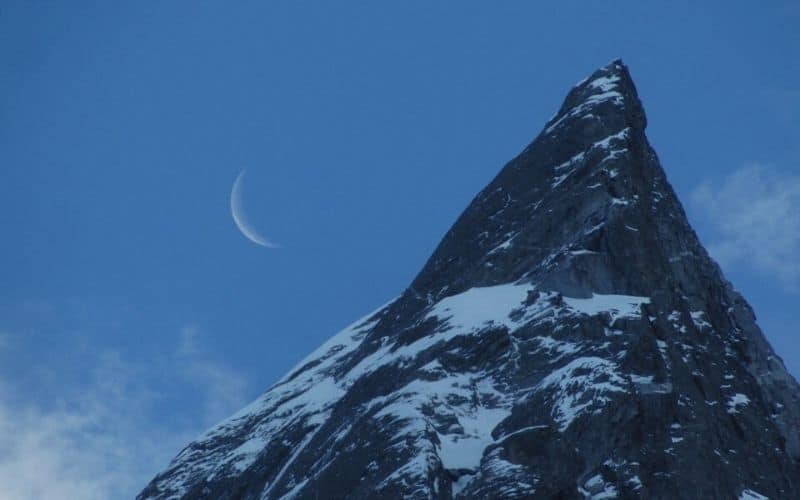
The best way to develop each of the above, luckily, is hiking, so if you’ve been a trail-goer for any length of time you’ll already be well on your way. There is, however, a big difference between walking on well-maintained trails and scaling tall peaks where the ‘trail’ may be near-vertical and/or ass-deep snow, with sections of steep rock and ice added in for fun.
The ideal approach is to build up your fitness on increasingly longer and harder trails before progressing onto more technical routes, preferably involving some rock scrambling. If you tend to hike with a light pack, gradually increase the weight to familiarize your leg muscles, and the rest of you, to climbing with a heavy load.
2. Get the Right Gear
Mountaineering doesn’t only require awesome fitness levels and technical know-how, but also a shedload of pricey hardware.
The following list itemizes a fairly standard collection of kit you’ll need for excursions in the alpine. While this list is not exhaustive, the need for some items will depend on the type of terrain you’re climbing in, the time of year, and the difficulty of the terrain.
- Ice axes
- Crampons
- Helmet
- Harness
- Rope(s)
- Belay device
- Carabiners
- Nuts and/or camming devices
- Slings
- Ice screws
- Micro traction and tibloc (for crevasse rescues)
- Stake/deadman/fluke (to build anchors or for crevasse rescues)
- Glacier glasses
- Avalanche beacon, snow shovel, and snow probe (for avalanche rescue)
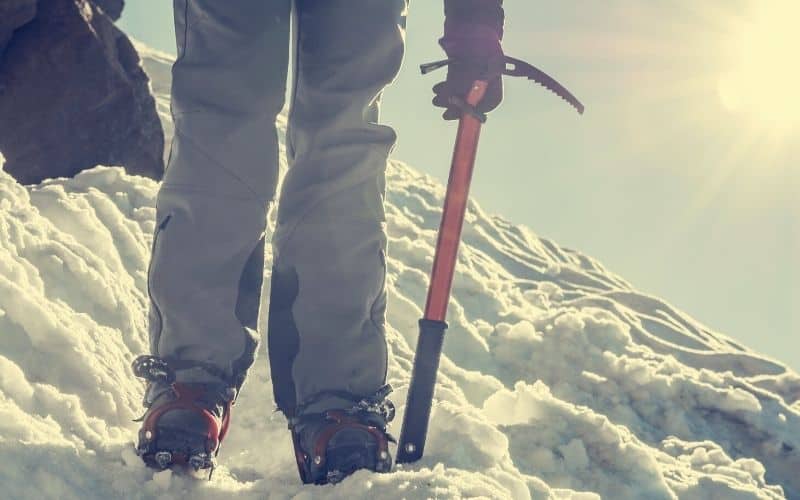
3. Start Small & Gain Experience
Just as Rome wasn’t built in a day, no great mountaineering feat was achieved by anyone hopping up from their sofa and stumbling up to 20,000+ feet. In other words, you gotta put in the time if you wanna take on a bigger climb.
Most mountaineers cut their teeth on nearby peaks on which they can master the techniques required to fry bigger fish. This could mean summit hikes that involve more technical sections of scrambling, winter hikes where the use of crampons and an ice axe is required, or low-grade, multi-pitch rock climbing.
Many also choose to travel to so-called “trekking peaks”, such as Kilimanjaro, to gain experience with expedition-style mountaineering at high elevations.
This approach has many benefits. It builds your fitness, familiarizes you with mountaineering techniques and the use of technical gear, and will improve your head for heights and exposure. All told, it’s an apprenticeship in everything needed to take on bigger, more technical climbs, and a taster that’s sure to whet your appetite for new challenges.
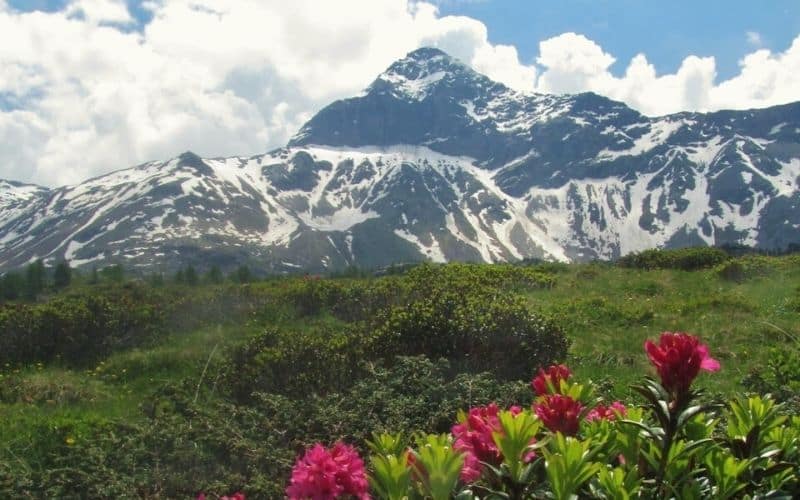
4. Research Your Route
When choosing your first mountain route, it’s wise to do your research and assess your own skills and physical capabilities modestly before drawing up a shortlist. The annals of mountaineering history and lore are awash with tales of climbers who bit off more than they could chew, so we recommend nibbling rather than chomping until you’ve gained experience.
So, what things should you look out for? The best way to narrow down the options is to identify potential hazards on any specific route and use these to conduct a process of elimination.
If, for example, the route involves a glacier crossing, do you have the knowledge and gear to conduct a crevasse rescue? If it involves exposed sections, do you have a head for heights? If it involves mixed climbing, do you have the necessary proficiency in using ropes, nuts, and friends? And if it’s at high elevation, are you sufficiently acclimatized to avoid altitude sickness?
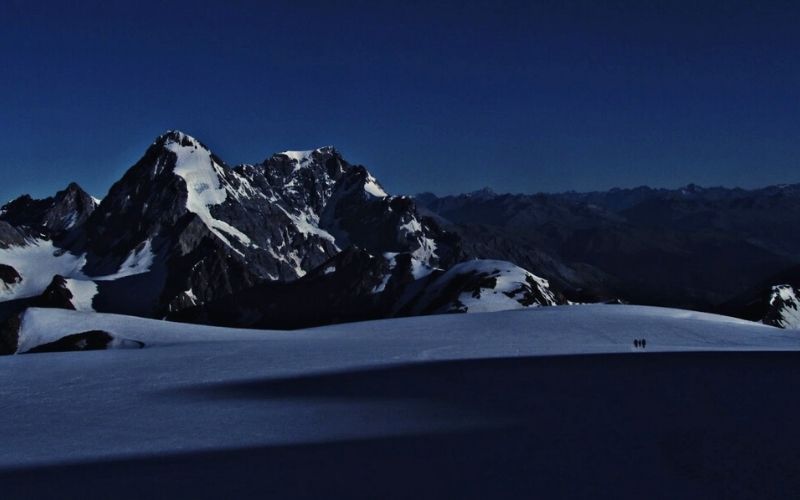
5. Learn the Techniques & Skills
If the above sounded like a bit of a buzz-kill, here’s the better news: all of the above hazards can be mitigated and overcome with a little bit of education and practice.
The most fundamental technical skills to learn before setting off to conquer peaks in alpine terrain are correct crampon technique (French, German, and American), self-arrest with an ice axe, crevasse rescues, avalanche avoidance and rescue, and, of course, navigation.
For navigation, check out our guide on how to use a map and compass.
For avalanche awareness, we recommend taking a winter skills course such as those offered by NOLS.
For crampon technique and self-arrest with your ice axe, check out the videos below.
6. Get a Guide
Whether you enlist a guide to take you up your first big mountain or to teach you the fundamentals of mountaineering and mountain climbing, the benefits of doing so will be huge.
In addition to giving you your first taste of alpine climbing, you’ll gain skills that will help to build your confidence, see how technical mountaineering gear is used in various contexts, and learn to move efficiently and safely in technical and exposed terrain.
Many are apt to shy away from the idea of hiring a guide, thinking it perhaps demonstrates a lack of moxie or pluck. Our advice? Get over it. You wouldn’t drive a car, start performing surgery, or embark on a deep-sea diving career without appropriate training and/or supervision, why would you risk venturing onto tough mountain routes without it?
7. Avalanche Awareness
The risk of avalanches is almost ever-present in the high mountains, and every year hundreds of alpinists meet an unfortunate end as a result of either human error or chance.
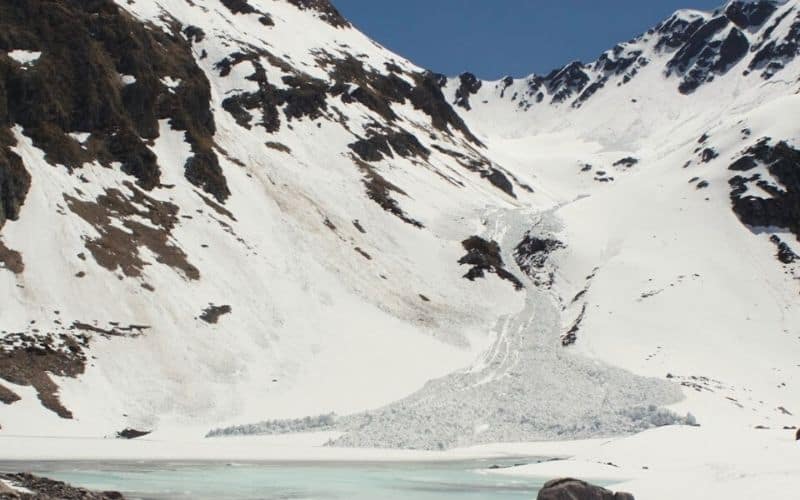
While there is rarely zero risk of avalanches on permanently snow-bound peaks, there are multiple steps you can take to minimize the risk of getting caught in one and to increase the likelihood of surviving if you do.
- Take a Course – On an avalanche awareness course, you’ll learn how to interpret avalanche forecasts, how to choose a route that minimizes risk, how to identify hazardous slopes, and how to rescue buried victims.
- Read the Forecasts – Your first port of call should be the forecasts provided by local sources in the area where you’ll be climbing. If unavailable, we recommend calling local climbing stores or clubs to get the lay of the land. And as always, be sure to check weather forecasts, too!
- Carry the Gear – An avalanche transceiver/beacon, snow probe, and snow shovel should be the first things in your backpack for climbs in avalanche-prone areas.
- Vet Your Team – Climb only with team members who also carry the above kit and are proficient in avalanche rescue.
6 Climbs to Cut Your Teeth On
1. Gran Paradiso, Italy
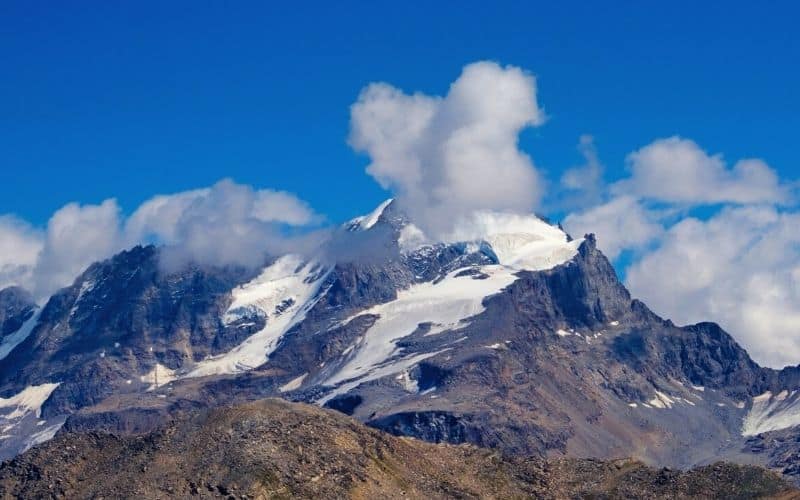
If you’re looking to climb a big alpine peak that’s relatively straightforward, Italy’s Gran Paradiso is a great place to start. “GranPa”, as it’s known locally, is 4,061m high and graded F+, so requires little technical expertise beyond the basic use of crampons and an ice axe, along with crevasse-rescue techniques.
There are two routes to the top, both of which handily have a full-service mountain hut along the way.
2. Mount Hood, Oregon
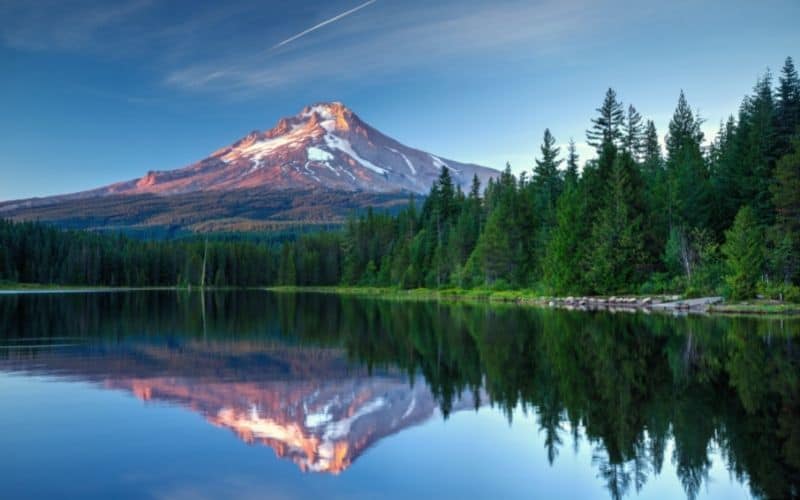
In the Pacific Northwest Oregon’s highest mountain is awash with climbing routes of all grades, but the most popular – and most suitable for beginners – is the South Side Route, a Class 2 climb that begins at the 5,800′ Timberline Lodge parking area.
Legend has it that Mount Hood was once summited by a female climber in high heels, but this doesn’t mean it’s a cake-walk. Rockfall and avalanches are a risk at any time of year and you’ll face fairly serious exposure on the summit ridge. Proficiency in the use of crampons and an ice axe is necessary.
3. Stok Kangri, Ladakh, India
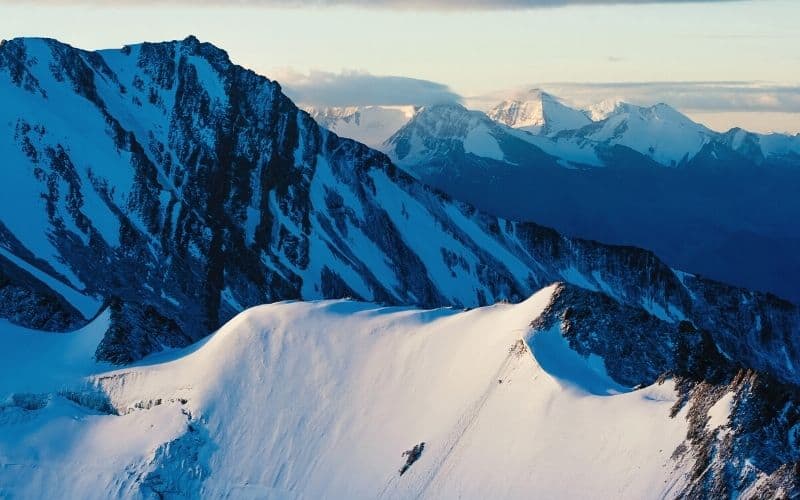
Located just a short drive from Ladakh’s capital, Leh, the 6,100-meter Stok Kangri is the perfect mountain for those seeking to conquer their first 6000er in the Himalayas. The ascent of Stok Kangri doesn’t require technical climbing skill, but the elevation is sure to be challenging for most.
Starting at the Stokmonastery, you’ll sleep in 1 or 2 camps on the way to a basecamp at just over 5,000 meters. On summit day, you’ll cross the slender Stok Glacier before a low-grade scramble and ridge climb to the top, where you’ll enjoy stupendous panoramas of the Karakoram and Zanskar ranges.
4. Pachermo Peak, Nepal
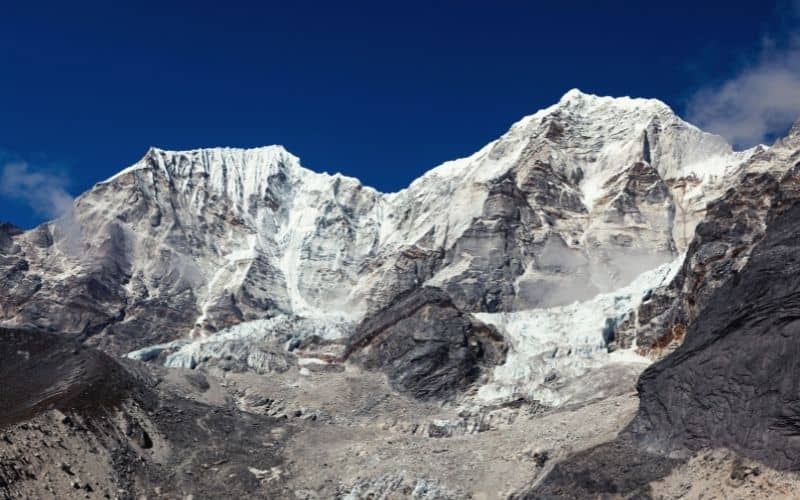
Pachermo is one of Nepal’s most popular “trekking peaks”, and with good reason. This 6,200-meter mountain lies on the border with Tibet, and the ascent begins with a long trek through the stunning Khumbu and Rolwaling valleys, where you’ll overnight in various Sherpa villages to acclimatize.
From there, you’ll climb to Tashi Lapcha pass before reaching the peak via a glacier crossing and highly aesthetic summit ridge. On top, you’ll enjoy views of some of the planet’s tallest peaks, including Mount Everest, Lhotse, Cho Oyu.
While no more technical than any other climb on this list, the thin air and steep ascent to the pass make this one of the most strenuous.
5. Nevado Pisco, Cordillera Blanca, Peru
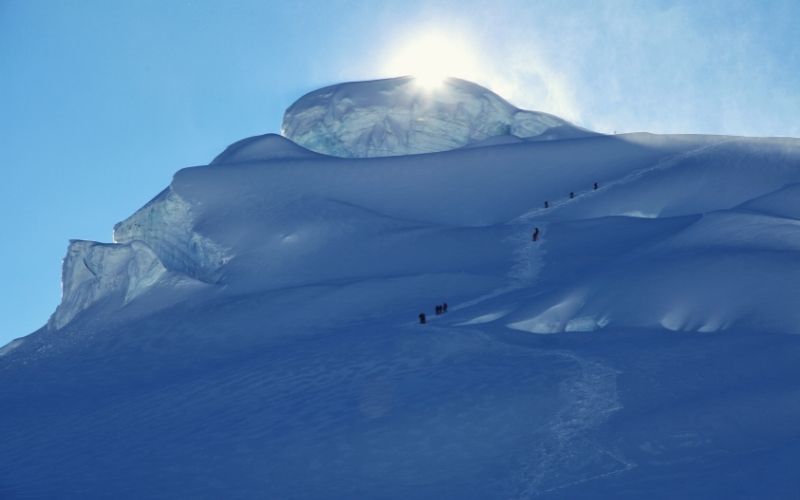
Nevado Pisco is one of the most beautiful mountains in the Cordillera Blanca, and also one of the easiest to climb.
Most summiteers complete the climb to the 5,752m apex in four days. Starting in Huaraz, you’ll trek through a wild mountainous landscape on your way to the Nevado Pisco basecamp at 4,650m or Campo Morrena advanced base camp at 4,900m. From there, the ascent is non-technical but requires previous alpine experience.
On top, the views are mesmerizing in all directions, though the undoubted highlights are the towering peaks of Alpamayo, Los Cava, Cerro La Esfinge, and Peru’s tallest mountain, Huascaran.
6. Breithorn, Switzerland/Italy
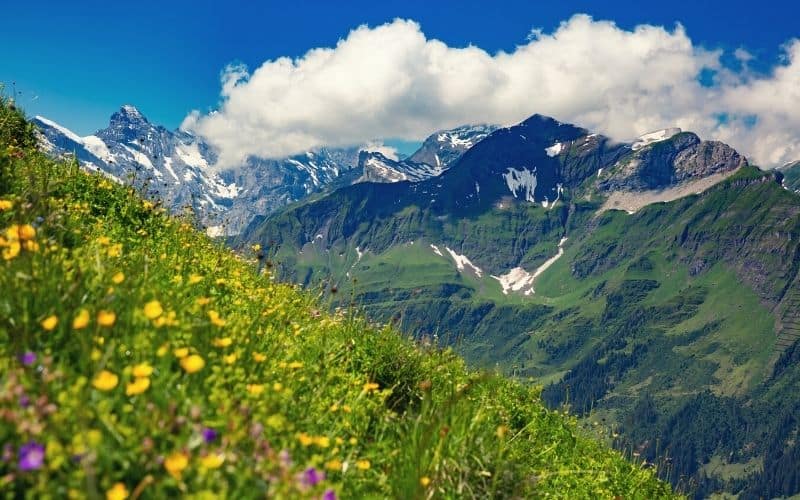
The Breithorn is often climbed as an acclimatization mount for would-be summiteers of nearby mountains like Mont Blanc, the Matterhorn, or Monte Rosa. The Normal Route can be done easily within a day, though good fitness levels and crevasse-rescue skills are a must.
A guided trip on the Breithorn is a great way to learn new skills and experience without having to go through the logistical rigmarole required to take on most other big peaks.
Mountain Climbing for Beginners: Climb On!
Getting started in mountaineering is far more difficult than getting started in, say, rock climbing or hiking. However, the reward will be more than adequate compensation for the time and effort you spend learning the ropes!
We hope our guide to mountain climbing for beginners will help you take those first steps toward becoming a mountaineer. If you have any tips you think we should add, feel free to drop them in the comments box below. And if you’d like to share this post with your friend, share away!
